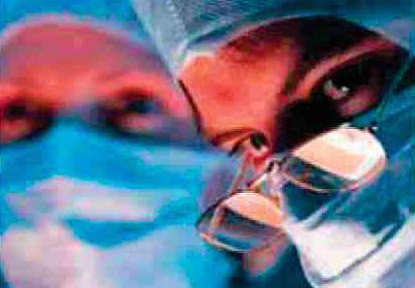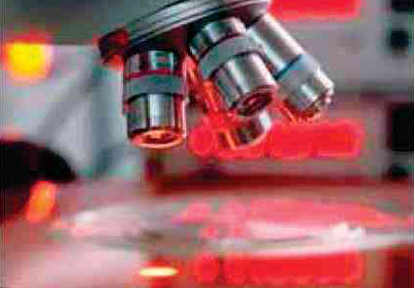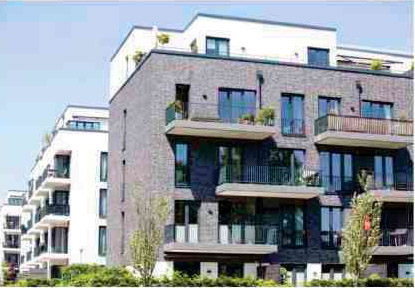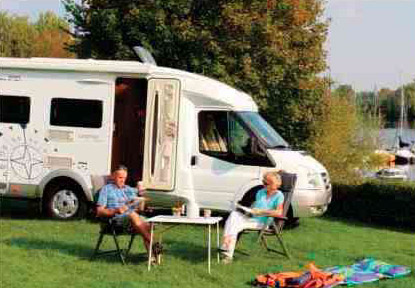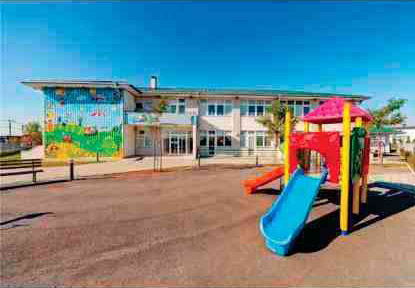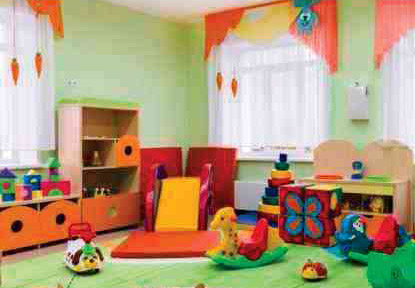The sterilization system has all the benefits of a portable air purifier weighing only 11 lbs. The variable speed blower moves the air into the reflective Aluminum Reaction Chamber so that the air travels parallel to the UV Lamp where the Dual Zone UVC/UVV (Germicidal /Oxidizing) Lamp destroys the biological and chemical contaminants. The can be used continuously, or when the need arises.
Easily transported and includes a stand and carrying handle. The sterilization system designed to cover up to 900 square feet and is ideal for anyone in need of a cost effective solution, for those who work in offices, or for those who do not have a forced air home system
- Eradicates bacteria, viruses and mold
- Destroys chemical and biological odors
- Patented system in a portable UV Air Purifier weighing 11 lbs.
- 19mm Quartz UVC/UVV ‘J’ Lamp (9” arc length)
- 9 electronically controlled speeds
- Touch-Pad Digital Controls with Count-Down Timer
- Purify up to 900 square feet
- Easily wall mountable. Stand and handle included
- ETL certified
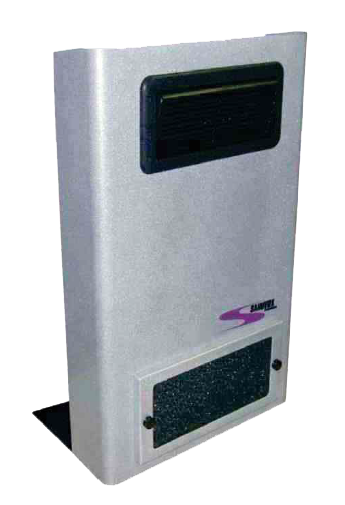
2021 COVID-19 Coronavirus Ultraviolet Susceptibility
Memo from the Authors
The current global Coronavirus pandemic is of urgent concern with its high transmission rate and rapid spread throughout the world. The current reported death rate is 2-3% and vaccine has only become available to the public recently Structurally this virus is not unique and is similar to other coronaviruses such as Severe acute respiratory syndrome (SARS) and Middle East respiratory syndrome (MERS), and can be addressed with existing disinfection methods such as chemicals and new technologies such as Focused Multivector Ultraviolet (FMUV) from PurpleSun.
Answers to Frequently Asked Questions
- How long does COVID-19 Live on Surfaces? 6 hours - 9 days on surfaces
- What is the difference between a virus and bacteria? Bacteria are self-contained, have cell walls, and can survive and replicate on their own. Viruses are DNA molecules that may be naked or encapsulated and require a host to replicate. They cannot be treated with antibiotics and require a vaccine
- What is the biggest issue with this COVID-19 virus? High secondary infection rate, Rapid spread (more rapid than SARS or MERS), Fatality rate (2-3%)
- Is ultraviolet light effective against COVID-19? Ultraviolet light destroys DNA of viruses, bacteria, and fung
- What is the appropriate Personal Protective Equipment (PPE) for healthcare staff? httos://www.cdc.clov/coronavirus/2019-ncov/downloads/COVID-19-PPE.pdf
General Explanation of the Disease
COVID-19 is the respiratory disease caused by the SARS-CoV-2 virus that has caused outbreaks worldwide. The SARS-CoV-2 is a new variant in the betacoronavirus family (Fisher 2020). It transmits by direct contact or contact with fomites and can be suspended in air as well, as are the related betacoronaviruses SARS, MERS, and the four known Human coronaviruses — 0C43, 229E, NL63, and HKU1. The majority of infection transmissions are believed to be by droplet spray from coughing and sneezing and by direct contact or contact with fomites.
Confirmation That Ultraviolet is Effective
Ultraviolet light can be an effective measure for decontaminating surfaces that may be contaminated by the SARS-CoV-2 virus by inducing photodimers in the genomes of microorganisms. Ultraviolet light has been demonstrated to be capable of destroying viruses, bacteria and fungi in hundreds of laboratory studies (Kowalski 2009). The SARS-CoV-2 virus has not yet been specifically tested for its ultraviolet susceptibility but many other tests on related coronaviruses, including the SARS coronavirus, have concluded that they are highly susceptible to ultraviolet inactivation. This report reviews these studies and provides an estimate of the ultraviolet susceptibility.
It is estimated that the SARS-CoV-2 virus can survive on surfaces for up to 9 days, based on its similarity to SARS and MERS. Standard disinfectants are effective against SARS-CoV-2 but as an extra level of
protection, and to shield against errors in the manual disinfection process, ultraviolet light can be used to disinfect surfaces and equipment after the manual chemical disinfection process is completed. ASHRAE recommends ultraviolet germicidal irradiation as one strategy to address COVID-19 disease transmission (ASHRAE 2020).
COVID-19 is highly contagious and so any residual contamination, no matter how small, can pose a threat to healthcare workers and patients. The PurpleSun E300 Focused Multivector Ultraviolet (FMUV) system with Shadowless DeliveryTM (see Figure 1) is an automated system that has proven to reduce surface contamination by 96% and can address contamination left behind by current manual chemical cleaning which was shown to only reduce contamination by 36% (Armellino 2020).
The PurpleSun E300 system has demonstrated elimination of 99%-99.99% of bacteria and fungi as listed in Table 2 in laboratory tests within 90 seconds (Petraitis 2017). Similar reductions could be expected against the COVID-19 coronavirus in 90 seconds as well.
Scientific Rationale
Coronaviruses are members of the Coronaviridae group and contain a single-stranded, positive-sense RNA genome surrounded by a corona-like helical envelope (Ryan 1994). Approximately 100 sequences of the SARS-CoV-2 genome have been published and these suggest there are two types, Type I and Type II, of which the latter came from the Huanan market in China while the Type I strain came from an unknown location (Zhang 2020). The genome consists of 29,751 base pairs (NC_045512.2) and the genome is about 80% homologous with SARS viruses (NCB! 2020, Fisher 2020). Coronaviruses have a size range of 60-140nm, with a mean size of 0.10 microns (Zhu 2020).
Table 1 summarizes the results of studies that have been performed on Coronaviruses under ultraviolet light exposure, with the specific species indicated in each case. The D90 value indicates the ultraviolet dose for 90% inactivation. Although there is a wide range of variation in the D90 values, this is typical of laboratory studies on ultraviolet susceptibility. The range of D90 values for coronaviruses is 7-2410 J/m2 and the average of all studies is 237 J/m2. However, the study by Walker (2007) is an airborne study and is an outlier in this set of water-based studies. Also, the studies by Weiss (1986) and Darnell (2004) are outliers on the low and high ends. Excluding outliers, the mean D90 is 47 J/m2, and this should adequately represent the ultraviolet susceptibility of the SARS-CoV-2 (COVID-19) virus.
Two recent studies on SARS-CoV-2 have been added to Table 1 (Inagaki 2020, Bianco 2020). The average value of the D90 is 27 J/m2, which suggests the average value for all coronaviruses reported above (47 J/m2) is conservative. Both of these studies indicate tailing in the survival curve above about 3-6 logs of reduction, beyond which the D90 value will not be an accurate predictor (Blatchley 2020).


Updated on July 7, 2020 by:
Dr. Wladyslaw J. Kowalski, PhD, Chief Scientist and World UV Expert, PurpleSun Inc Researchpurplesun.com
Dr. Thomas J. Walsh, MD, PhD, Infectious Diseases Translational Research Laboratory, Weill Cornell Medicine of Cornell University, New York City, NY
Dr. Vidmantas Petraitis, MD, Infectious Diseases Translational Research Laboratory, Weill Cornell Medicine of Cornell University, New York City, NY
2015: https://www.researchgate.net/publication/284691618_SARS_Coronavirus_UV_Susceptibility
REFERENCES
- Armellino D, Walsh TJ, Petraitis V, Kowalski W. (2019). Assessment of focused multivector ultraviolet disinfection with shadowless delivery using 5-point multisided sampling of patient care equipment without manual-chemical disinfection. Am J Infect Control 47,409-414.
- Armellino D GK, Thomas L, Walsh T, Petraitis V. (2020). Comparative evaluation of operating room terminal cleaning by two methods: Focused multivector ultraviolet (FMUV) versus manual-chemical disinfection Am J Infect Contr (Accepted).
- ASHRAE. (2020). ASHRAE Resources Available to Address COVID-19 Concerns. (American Society of Heating, Refrigerating and Air-Conditioning Engineers, Atlanta, GA).
- Bianco A, M Biasin, G Pareschi et al. (2020). UV-C irradiation is highly effective in inactivating and inhibiting SARS-CoV-2 replication. medRxiv preprint doi: https://doi.orq/10.1101/2020.06.05.20123463 (unreviewed preprint).
- Blatchley ER, Petri B, Sun W. (2020). SARS-CoV-2 UV Dose-Response Behavior. International Ultraviolet Association (IUVA) White Paper.
- Darnell MER, Subbarao K, Feinstone SM, Taylor DR. (2004). Inactivation of the coronavirus that induces severe acute respiratory syndrome, SARS-CoV. J Virol Meth 121,85-91.
- Duan SM, Zhao XS, Wen RF, Huang JJ, Pi GH, Zhang SX, Han J, Bi SL, Ruan L, Dong XP. (2003). Stability of SARS Coronavirus in Human Specimens and Environment and its Sensitivity to Heating and Environment and UV Irradiation. Biomed Environ Sci 16,246-255.
- Eickmann M, Gravemann U, Handke W, Tolksdorf F, Reichenberg S, MEuller TH, Seltsam A. (2020). Inactivation of three emerging viruses —severe acute respiratory syndrome coronavirus, Crimean—Congo haemorrhagic fever virus and Nipah virus — in platelet concentrates by ultraviolet C light and in plasma by methylene blue plus visible light Vox Sanguinis 115:146-151.
- Fisher D, Heymann D. (2020). Q&A: The novel coronavirus outbreak causing COVID-19. BMC Med 18,57.
- Hirano N, Hino S, Fujiwara K. (1978). Physico-chemical properties of mouse hepatitis virus (MHV-2) grown on DBT cell culture. Microbiol Immunol 22,377-90.
- Inagaki H, A Saito, H Sugiyama, T Okabayashi, S Fujimoto. (2020). Rapid inactivation of SARS-CoV-2 with Deep-UV LED irradiation. bioRxiv preprint doi: https://doi.orcill 0.1101/2020.06.06.138149. (unreviewed preprint).
- Jingwen C, Li L, Hao W. (2020). Review of UVC-LED Deep Ultraviolet Killing New NCP Coronavirus Dose. In Technology Sharing. (Hubei Shenzi Technology Co., Ltd.
- Kariwa H, Fujii N, Takashima I. (2004). Inactivation of SARS coronavirus by means of povidone-iodine, physical conditions, and chemical reagents. Jpn J Vet Res 52,105-112.
- Kowalski W, Bahnfleth W, Raguse M, Moeller R. (2019). The Cluster Model of Ultraviolet Disinfection Explains Tailing Kinetics. J Appl Microbiol 128,1003-1014.
- Kowalski WJ. (2009). Ultraviolet Germicidal Irradiation Handbook: UVGI for Air and Surface Disinfection. (Springer, New York).
- Liu Y, Cai Y, Zhang X. (2003). Induction of caspase-dependent apoptosis in cultured rat oligodendrocytes by murine coronavirus is mediated during cell entry and does not require virus replication. J Virol 77,11952-63.
- NCBI. (2020). Genome Database https://www.ncbi.nlm.nih.gov/.
- Petraitis V PR, Schuetz AN, K. Kennedy-Norris K, Powers JH, Dalton SL, Petraityte E, Hussain KA, Kyaw ML, Walsh TJ.. (2014). Eradication of medically important multidrug resistant bacteria and fungi using PurpleSun Inc. multivector UV technology.. In IDWeek. (IDWeek, Philadelphia, PA.
- Ryan KJ. (1994). Sherris Medical Microbiology. (Appleton & Lange, Norwalk).
- Saknimit M, Inatsuki I, Sugiyama Y, Yagami K. (1988). Virucidal efficacy of physico-chemical treatments against coronaviruses and parvoviruses of laboratory animals. Jikken Dobutsu 37,341-345.
- Walker CM, Ko G. (2007). Effect of ultraviolet germicidal irradiation on viral aerosols. Environ Sci Technol 41,5460-5465.
- Weiss M, Horzinek MC. (1986). Resistance of Berne virus to physical and chemical treatment. Vet Microbiol 11,41-49.
- Zhang L, Yang Y-R, Zhang Z, Lin Z. (2020). Genomic variations of COVID-19 suggest multiple outbreak sources of transmission. medRIX (preprint).
- Zhu N, Zhang D, Wang W, Li X, Yang B, Song J, Zhao X, Huang B, Shi W, Lu R and others. (2020). A Novel Coronavirus from Patients with Pneumonia in China, 2019. N Engl J Med 382,727-733.
